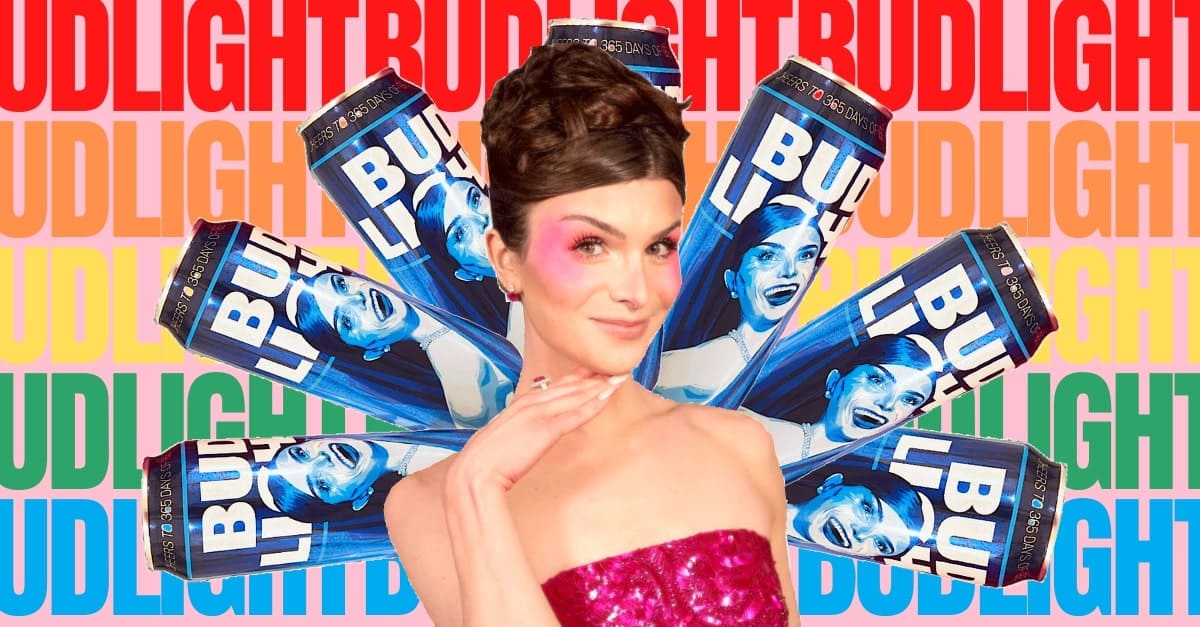WTF Brand? The Bud Light Fiasco: A Branding Catastrophe Unveiled

Bud Light, the leading beer brand in the US, ventured to revitalize its image by partnering with Dylan Mulvaney, a social media influencer and transactivist, to promote their latest Bud Light contest. However, this move stirred discontent among the brand's core customers, resulting in a social media backlash, customer boycotts, and a substantial decline in stock value. Not a favorable outcome.
Unpacking the Case
Introduced in 1982 as Budweiser Light by Anheuser-Busch Companies, Bud Light stands as the flagship low-calorie beverage under Budweiser and is promoted as a light beer.1 In the first quarter of 2023, Bud Light launched a trans-inclusive campaign in collaboration with Dylan Mulvaney, a renowned American actress, comedian, and social media personality with over 10 million TikTok followers. Mulvaney gained popularity by sharing her transitioning journey and "girlhood" experiences.2
From "Fratty" to "Trendy"
Aligning with the trend of other top-selling US beer brands3, Bud Light aimed to rejuvenate its brand image and connect with younger audiences through an LGBTQ+ partnership. The Vice President of Marketing explained the strategy as an attempt to "evolve" and "elevate" the brand by creating an inclusive campaign with influencers like Dylan Mulvaney to authentically engage diverse demographics.45 Traditionally targeting sports fans, women, and working-class citizens, Bud Light's recent campaign, embracing the "woke" trend, provoked controversy and alienated its core fan base, including conservative figures like singer-songwriter Kid Rock and traditional family-conscious women.67
Good or Bad Practice?
While creating awareness for positive initiatives like trans activism is a recognized business strategy8, the risk lies in going "off-brand" or appearing inauthentic when aligning with societal causes solely for brand promotion. Bud Light's choice of Dylan Mulvaney as a brand influencer deviated from its usual imagery, as the "Breakfast at Tiffany's" look and preppy decor sharply contrasted with both traditional beer brand advertisements and Bud Light's established image.
Traditionally, Bud Light excelled in creating positive momentum through its marketing efforts. The 2017 "Dilly Dilly" advertising campaign, featuring a medieval banquet, became a cultural phenomenon, boosting sales.9 The success was attributed to a strong understanding and alignment with their core customers. Dave Sutton, a transformational marketer, explained that the campaign strategically tapped into Bud Light's customers' habits, such as watching *Game of Thrones* and attending parties with alcoholic beverages.10 In 2020, the introduction of Bud Light Seltzer partnered with the renowned singer Post Malone for a successful Super Bowl commercial.11 This partnership made sense given Post Malone's broad appeal across music genres and his self-proclaimed love for beer.12
Both these campaigns resonated effectively with Bud Light's core audience, resulting in increased brand awareness and sales. However, the current partnership with Mulvaney lacked resonance with beer customers, leading to a significant decline in stock value, with the parent company losing more than $6 billion in market capitalization.13
Possible explanations for this brand failure extend beyond transphobia, as previous LGBTQ+ efforts by Bud Light did not result in significant backlash or decreased sales.14 Targeting new customer segments isn't inherently problematic, as successful attempts within the hard seltzer beverage category targeting male consumers have demonstrated. The backlash may stem from the perceived negation of masculine representation by the selected brand ambassador. It is not the gender identity represented but the potentially gimmicky hyper-feminine persona that, unintentionally, can be perceived as a parody of multiple non-exclusive categories: gender, sexual identity, women/men-hood, and sports aficionados.
Sometimes you just want to drink a beer without getting a lecture on social or political commentary or someone’s sexual orientation.
“Go Big or Go Home” or “Go Woke, or Go Broke”?
Taking creative risks is commendable for companies to stay current, yet brands must consider market insights to ensure alignment with core audiences. Despite Vice President Alissa Heinerscheid's aim for a "truly inclusive" approach appealing to both genders, Bud Light overlooked reflecting its brand core demographic. This oversight, as noted by St. Louis-area operator John Rieker, led to marketing to a niche audience while alienating a larger consumer base.15
Jim Geraghty, senior political correspondent at National Review, attributes this brand misalignment to a potential disconnect between Heinerscheid's privileged upper-class profile and Bud Light's demographic. He emphasizes that decision-makers in high-level marketing positions at top-selling brands must understand the demographic they intend to target.
While the failed attempt to engage with younger generations may not automatically result in a loss in sales, there could be a negative impact on brand perception and loyalty. Brands endorsing "social justice" initiatives may face "woke fatigue," where consumers tire of constant social and political commentary through influencer associations. As Patrick Imig, a hospitality consultant in St. Louis, notes, sometimes consumers just want to enjoy a beer without being subjected to lectures on social or political issues.17
Brand: Do Better.
In 2023, brands must move away from a top-down marketing approach. Establishing a strong link with current or new customers and understanding their natural ecosystem is crucial for resonating with audiences. Customers express their opinions freely on digital platforms, highlighting any misalignment between business components valuable for their experience: company values, brand representation, business management, and product quality. Conducting marketing research to understand the true needs and habits of customer targets, rather than seeking confirmation of preconceived ideas, is essential. Marketing professionals should aim to create strategies that generate revenue while genuinely addressing consumer needs, as the founder of TopRigth aptly states: “Great story without sales is art. Great story with strategy is marketing”.18
Brands co-create with customers, and occasional mistakes can happen to even the best. Nevertheless, brands need to be mindful of their actions. So, once again: WTF brand?
Image credits (slideshow):
(1) Dylan Mulvaney’s Instagram sponsored post in partnership with Bud Light.
(2) Kid Rock’s Instagram post about the Bud Light campaign.
(3) Journalist Ian Miles Cheong’s Twitter post mentions Bud Light’s last campaign.



